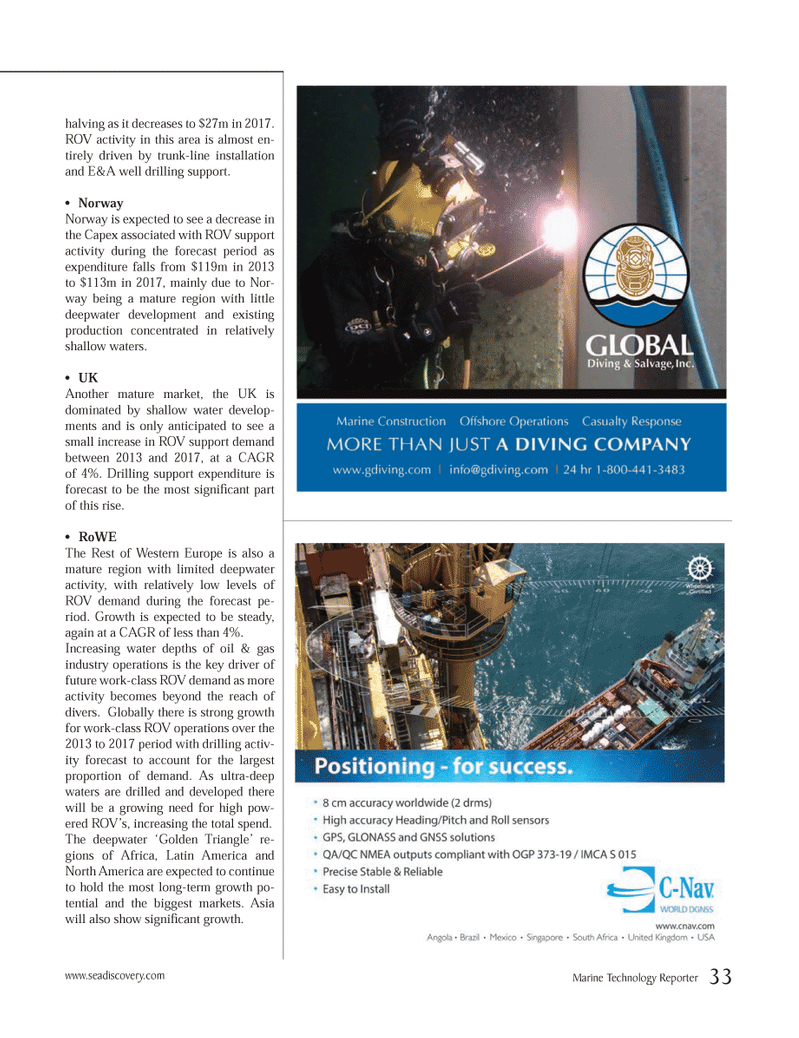
Page 33: of Marine Technology Magazine (November 2013)
Fresh Water Monitoring & Sensors
Read this page in Pdf, Flash or Html5 edition of November 2013 Marine Technology Magazine
halving as it decreases to $27m in 2017. ROV activity in this area is almost en- tirely driven by trunk-line installation and E&A well drilling support. NorwayNorway is expected to see a decrease in the Capex associated with ROV support activity during the forecast period as expenditure falls from $119m in 2013 to $113m in 2017, mainly due to Nor- way being a mature region with little deepwater development and existing production concentrated in relatively shallow waters. UKAnother mature market, the UK is dominated by shallow water develop- ments and is only anticipated to see a small increase in ROV support demand between 2013 and 2017, at a CAGR of 4%. Drilling support expenditure is forecast to be the most signiÞ cant part of this rise. RoWEThe Rest of Western Europe is also a mature region with limited deepwater activity, with relatively low levels of ROV demand during the forecast pe- riod. Growth is expected to be steady, again at a CAGR of less than 4%. Increasing water depths of oil & gas industry operations is the key driver of future work-class ROV demand as more activity becomes beyond the reach of divers. Globally there is strong growth for work-class ROV operations over the 2013 to 2017 period with drilling activ- ity forecast to account for the largest proportion of demand. As ultra-deep waters are drilled and developed there will be a growing need for high pow- ered ROVÕs, increasing the total spend. The deepwater ÔGolden TriangleÕ re- gions of Africa, Latin America and North America are expected to continue to hold the most long-term growth po- tential and the biggest markets. Asia will also show signiÞ cant growth. Marine Technology Reporter 33www.seadiscovery.com MTR #9 (18-33).indd 33MTR #9 (18-33).indd 3312/12/2013 11:15:29 AM12/12/2013 11:15:29 AM

 32
32

 34
34
